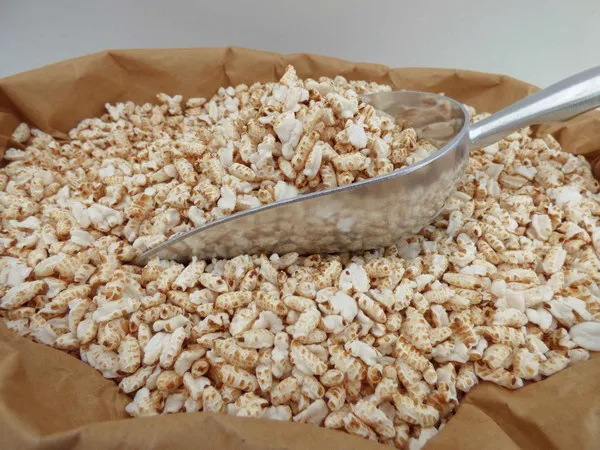For individuals with diabetes, maintaining a balanced diet is crucial to managing blood sugar levels. Puffed rice, a popular cereal grain that has been processed to create a light and crispy texture, is often touted as a healthier alternative to other rice varieties. In this article, we explore the potential benefits of puffed rice for individuals with diabetes and examine the considerations to keep in mind when incorporating it into a diabetes-friendly diet. Join us as we delve into the nutritional profile, glycemic impact, and practical aspects of including puffed rice in a diabetes management plan.
Understanding Puffed Rice
a. Production Process: Puffed rice is made by heating rice kernels under high pressure, causing them to expand and puff up. This process removes moisture and creates a light, airy texture.
b. Nutritional Composition: Puffed rice is low in fat and cholesterol-free. It is primarily composed of carbohydrates and provides small amounts of protein and dietary fiber. The exact nutritional content may vary depending on the brand and preparation method.
Glycemic Impact of Puffed Rice
a. Glycemic Index: The glycemic index (GI) measures how quickly a food raises blood sugar levels. Foods with a high GI are rapidly digested and absorbed, leading to a quicker rise in blood glucose levels. Puffed rice has a high GI, which means it can cause a rapid increase in blood sugar levels.
b. Glycemic Load: The glycemic load (GL) takes into account both the glycemic index of a food and the amount consumed. While puffed rice has a high GI, the GL can be influenced by portion size. Controlling portion sizes can help manage the impact on blood sugar levels.
c. Pairing with Protein and Fiber: Combining puffed rice with protein-rich and fiber-rich foods can help slow down digestion and minimize the glycemic impact. Adding nuts, seeds, or yogurt to puffed rice can provide additional nutrients and promote better blood sugar control.
Nutritional Considerations
a. Carbohydrate Content: Puffed rice is predominantly a source of carbohydrates, which can affect blood sugar levels. It is important for individuals with diabetes to monitor their carbohydrate intake and consider portion sizes when consuming puffed rice.
b. Fiber Content: While puffed rice is not a significant source of dietary fiber, pairing it with fiber-rich foods can help slow down digestion and promote better glycemic control. Including fruits, vegetables, and whole grains in the meal can increase the overall fiber content.
c. Micronutrients: Puffed rice is not a significant source of essential vitamins and minerals. Therefore, it is important to ensure a well-rounded and varied diet that includes a wide range of nutrient-rich foods to meet the body’s needs.
d. Sodium Content: Some commercially available puffed rice products may contain added salt or sodium. Monitoring sodium intake is important, especially for individuals with high blood pressure or other health conditions. Opting for unsalted or low-sodium varieties can be a healthier choice.
Practical Tips for Including Puffed Rice
a. Portion Control: Controlling portion sizes is key when including puffed rice in a diabetes-friendly diet. Measuring serving sizes and incorporating it as part of a balanced meal can help manage blood sugar levels.
b. Combination with Other Foods: Pairing puffed rice with protein-rich foods, such as Greek yogurt or cottage cheese, can help slow down the absorption of glucose and minimize blood sugar spikes. Adding fiber-rich fruits or vegetables can further enhance the nutritional value and improve glycemic control.
c. Meal Planning and Variety: Incorporating puffed rice as an occasional component of a well-planned meal can add texture and variety to the diet. However, it should not replace other whole grains or nutrient-rich foods.
Individualized Approach and Monitoring
a. Blood Glucose Monitoring: It is essential for individuals with diabetes to monitor their blood sugar levels regularly, especially when introducing new foods or making changes to their diet. This helps to understand the impact of puffed rice on individual glycemic control.
b. Consultation with Healthcare Professionals: Consulting with registered dietitians, nutritionists, or healthcare providers who specialize in diabetes management can provide personalized guidance and ensure the inclusion of puffed rice aligns with individual health goals and dietary needs.
c. Personal Response and Tolerance: Every individual with diabetes may respond differently to different foods. Some individuals may find that puffed rice affects their blood sugar levels more significantly than others. It is important to pay attention to personal responses and make adjustments accordingly.
Conclusion
Puffed rice can be part of a diabetes-friendly diet when consumed in moderation and as part of a well-balanced meal plan. While it has a high glycemic index and can impact blood sugar levels, combining it with protein-rich and fiber-rich foods can help mitigate the glycemic impact. Portion control, variety, and individualized monitoring are essential considerations when incorporating puffed rice into a diabetes management plan.
As with any dietary changes, it is crucial to work closely with healthcare professionals and regularly monitor blood glucose levels to ensure optimal glycemic control and overall well-being. By understanding the nutritional profile and considering the practical aspects of including puffed rice, individuals with diabetes can make informed decisions about incorporating this popular cereal grain into their diabetes management strategy.

